The 2025 Wired Freedom E-Bike: A Beast of Power and Versatility That Redefines Affordable Thrills
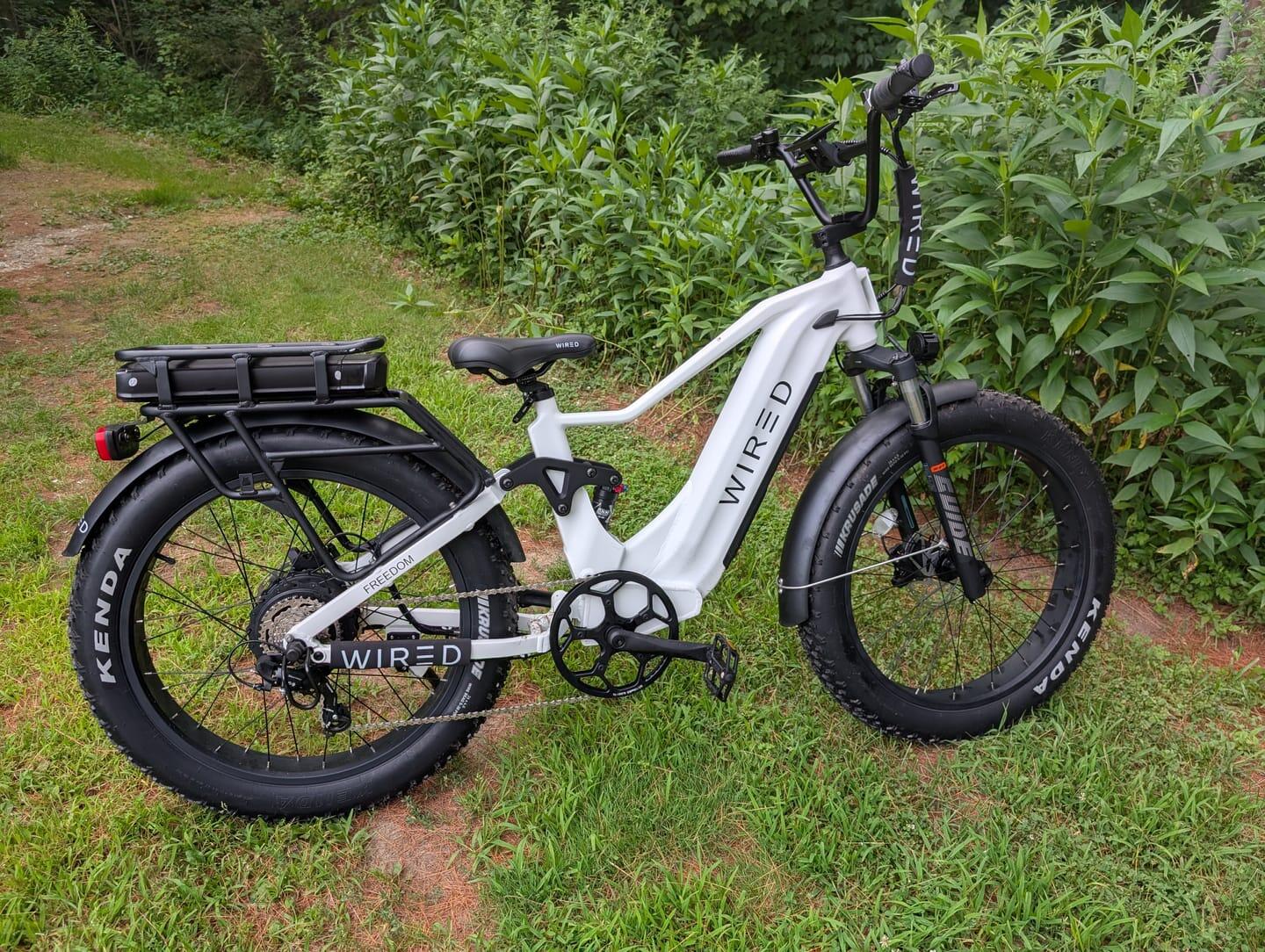
In the ever-evolving world of electric bikes, where speed, comfort, and affordability often clash, one model has been turning heads and sparking debates among riders. The 2025 Wired Freedom, with its dual-battery setup and promises of blistering performance, has emerged as a frontrunner in the $2,000 price range. If you’ve been scouring the market for an e-bike that delivers raw power without breaking the bank, this could be the game-changer you’ve been waiting for. But does it truly live up to the buzz? Let’s dive deep into its features, real-world performance, and whether it’s the right fit for your riding style.
Understanding the E-Bike Landscape: Why the Wired Freedom Stands Out
Electric bikes have come a long way since their humble beginnings as clunky, underpowered novelties. Today, they’re sophisticated machines blending pedal power with electric assistance, catering to commuters, off-road enthusiasts, and speed demons alike. The market is flooded with options, from sleek urban cruisers to rugged mountain beasts, but few strike the balance between high-end specs and accessible pricing like the Wired Freedom.
Priced at around $1,999, this bike enters a competitive arena dominated by brands like Ride1Up, Lectric, and Rad Power Bikes. What sets it apart? For starters, it’s a full-suspension, fat-tire e-bike built for versatility. In an era where e-bike regulations are tightening—think Class 1, 2, and 3 limits in many regions—the Wired Freedom pushes boundaries with unlockable speeds that flirt with moped territory. This isn’t just another commuter; it’s designed for those who crave adrenaline while still offering practical features like cargo racks and long-range batteries.
Historically, e-bikes in this price bracket often compromised on components: cheap brakes, basic suspensions, or limited battery life. Wired Bikes, a company known for iterating on rider feedback, has addressed these pain points in their 2025 model. Drawing from previous versions, they’ve amped up the powertrain and added a second battery, effectively doubling down on what made the original Freedom a cult favorite. Experts in the cycling community, including reviewers from outlets like Electric Bike Report, praise such evolutions for making high-performance riding more democratic. But as we’ll explore, it’s not without its quirks—deal-breakers for some that demand careful consideration.
Breaking Down the Specs: Power, Batteries, and Core Components
At the heart of the Wired Freedom is a robust 3,200W Hang Tied geared hub motor, paired with a 45-amp controller. This setup generates an impressive 153 Nm of torque, propelling the bike to speeds well beyond typical e-bike limits. Power comes from dual 60V Samsung batteries: a 20Ah unit integrated into the frame and a 15Ah one housed in the rear rack. Together, they offer 35Ah of capacity, translating to extended range that’s a boon for long adventures or daily errands without constant recharges.
The drivetrain keeps things straightforward yet effective. A seven-speed Shimano Tourney derailleur handles shifting, protected by a sturdy cage to prevent damage on rough terrain. Up front, a massive 56-tooth chainring signals this bike’s speed-oriented design—it’s built to fly, not crawl. Cranks from Light Pro and metal Wellgo pedals round out the setup, providing durability without unnecessary frills.
Suspension is where the Freedom shines. The four-bar Horst link rear suspension offers smooth travel, complemented by a DNM air shock with adjustable compression (three positions including lockout), rebound, and air pressure settings. This allows riders of all weights—from lightweight explorers to heavier adventurers up to 300 pounds—to dial in the perfect sag and support. Out front, an RST Guide fork with lockout and preload adjustment handles bumps with poise, though some might wish for an air fork for even finer tuning.
Tires are 26×4-inch Kenda Krusades, featuring tall knobs for off-road grip and a center channel that keeps road noise minimal. Unlike many fat tires that howl on pavement, these strike a quiet, confident balance. Braking duties fall to Gemma four-piston hydraulic disc brakes clamping 203mm rotors—thick and heat-resistant to prevent warping under hard use. The system uses mineral oil for easy maintenance, with adjustable levers to suit different hand sizes.
Ergonomics haven’t been overlooked. High-rise handlebars (bombproof, BMX-style) pair with lock-on faux-leather grips for comfort during long rides. The saddle is plush and bike-shaped, ideal for pedaling without chafing. A center-mounted display shows essentials like speed, battery percentage, motor temperature, and pedal-assist levels (0-5), all in a bright, readable format. Lighting is top-notch: a powerful front LED spotlight and dual rear taillights (one integrated, one on the battery) ensure visibility, with brake-activated brightening for added safety.
Metal fenders, a pre-installed rear rack (doubling as battery housing), and a bell complete the package. At first glance, this spec sheet reads like a wishlist for under $2,000—powerful, adjustable, and ready for anything.
Design and Build Quality: Beefy, Beautiful, and Built to Last
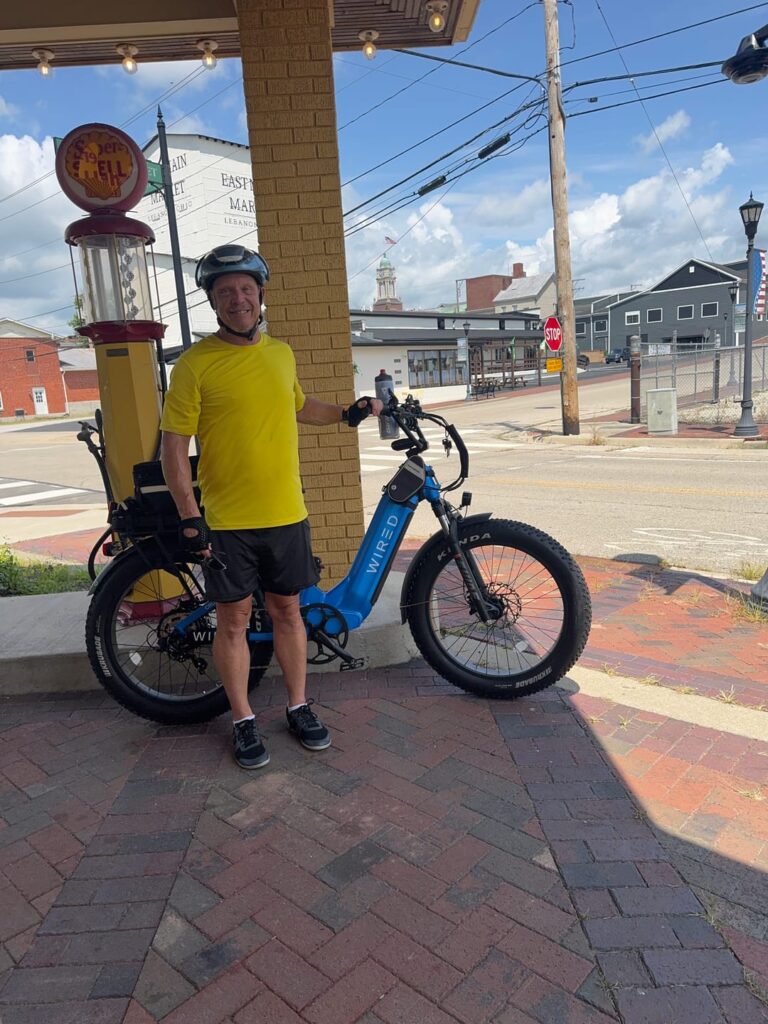
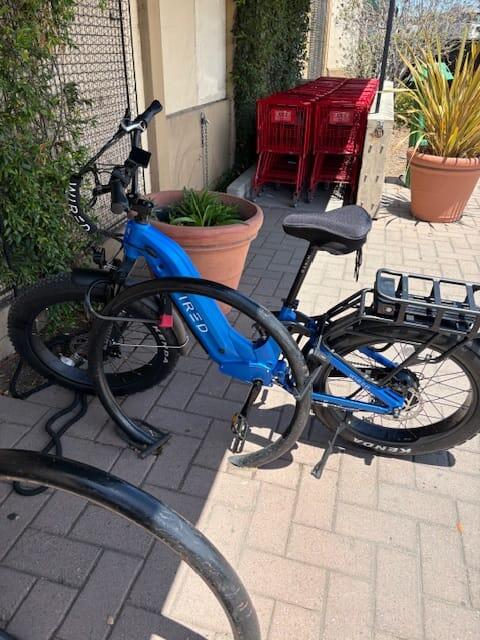
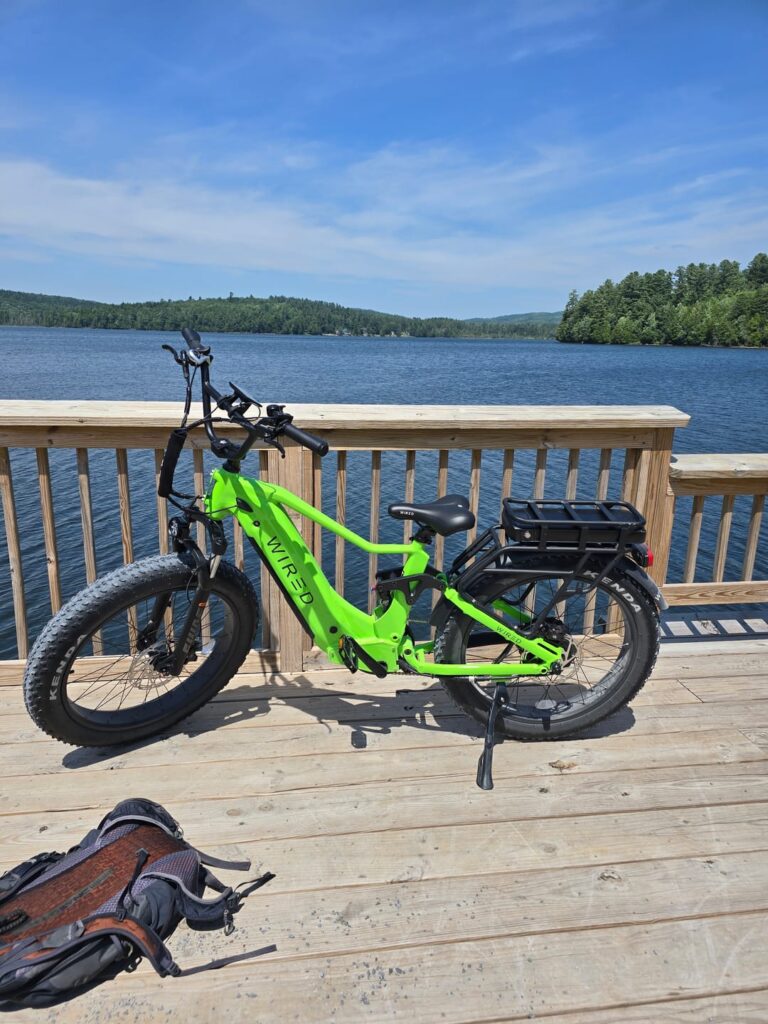

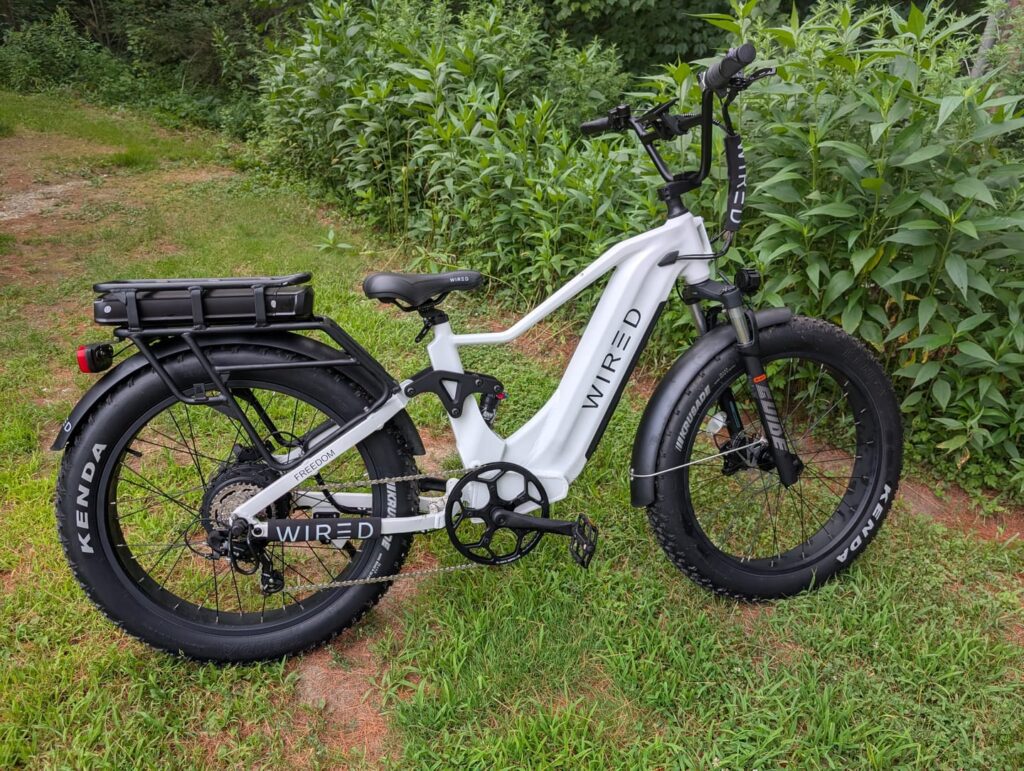
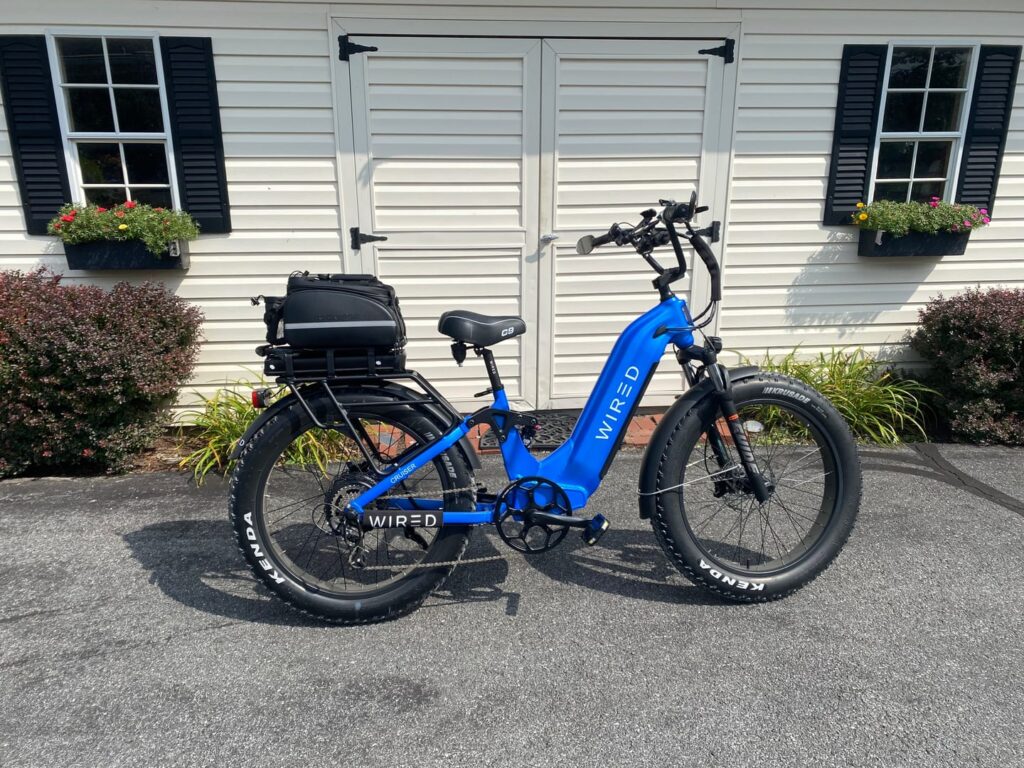
Visually, the Wired Freedom commands attention. Its frame is beefy and robust, exuding strength that’s more than skin-deep. The anodized paint job—a subtle sheen that’s neither glossy nor matte—adds a premium touch that photos don’t fully capture. Available in multiple colors, it appeals to riders who want style alongside substance.
Size-wise, this is no compact commuter; it’s a large bike, ideal for taller or bigger riders (think 6’4″ and 300 pounds). At 5’9″, I found the seat at its lowest allows flat-footed stability, but the sky-high handlebars initially felt extreme—like sitting on a chopper. Lowering them slightly (via spacers or aftermarket bars) transforms the ergonomics, making it more aggressive for spirited rides. This one-size-fits-most approach is clever: adjustable seat height and bars accommodate riders from 5’5″ to 6’5″ without custom frames.
Build quality impresses across the board. Nothing rattles or creaks, even on pothole-riddled roads. The rear rack is a standout—functional for cargo while concealing the second battery, a smart space-saving design. Fenders are sturdy metal, not flimsy plastic, and the overall assembly feels professional. Compared to competitors like the Ride1Up Revv 1 (a moped-style rival at a similar price), the Freedom offers more suspension travel and battery life, though it’s heavier at around 80-90 pounds fully loaded.
One potential nitpick: while the components are solid, they’re not top-tier luxury. The Shimano derailleur is basic, and pedals lack aggressive pins for muddy boots. But for the price, these are forgivable—easy upgrades if needed. In terms of durability, the thick rotors and protected derailleur suggest it’ll handle daily abuse, from urban commutes to trail bashing.
Performance in the Real World: Speed, Acceleration, and Hill-Conquering Power
Performance is where the Wired Freedom earns its “outrageous” reputation. Unlocked (via simple menu tweaks—hold set, enter advanced settings, disable class limits, and crank speed to 99 km/h), it shatters expectations.
Acceleration is explosive. From a standstill, throttle-only in pedal-assist level 5, it hits 20 mph in under 2 seconds—faster than many geared hub motors. The torque kicks in smoothly, though adjustable start strength prevents wheel spin on slick surfaces. On flat roads, top speed reaches 39-40 mph, exceeding Wired’s 35 mph claim. GPS-verified, this puts it in a league with pricier models like the Motor Goat, but at half the cost.
Hills? No problem. A 15% grade saw sustained 27-28 mph throttle-only at 190 pounds rider weight. The dual batteries ensure consistent power delivery, without the sag common in single-battery setups. Pedaling adds even more oomph: in level 5, speeds hit 40 mph effortlessly, though wind resistance (and watering eyes) remind you to gear up with goggles.
The cadence sensor-based assist is tunable—set power percentages per level (20% at 20 mph in level 1, up to 100% unlimited in level 5). This customization lets riders tailor for efficiency or max thrills. Without assist, pedaling feels heavy due to the bike’s weight, but even level 1 transforms it into a breeze.
Noise is minimal: a low-frequency motor whine adds to the power feel without annoyance. Range-wise, after 27 miles of mixed riding (hills, acceleration tests, off-road), batteries were above 50%—projecting 50+ miles on conservative use. In the e-bike world, where range anxiety plagues many, this dual setup is a revelation, especially for rural riders or long tours.
Comparisons help contextualize: Against the Ride1Up Revv 1 (topping 35 mph), the Freedom is faster and more suspended. Versus the Lectric XP 3.0 (28 mph max), it’s a rocket. Safety note: at these speeds, responsibility is key—scan far ahead, as physics limits stopping distances regardless of brakes.
Ride Comfort and Handling: Like Floating on a Cloud
Comfort is the Freedom’s secret weapon. The air rear shock, adjustable for sag (aim for 30%—I dialed in 175 PSI for a 190-pound setup), absorbs everything from urban potholes to trail roots. Combined with the RST fork and fat tires, it feels like riding on air—literally. Rough roads that jolt lesser bikes become minor blips; I barely felt cracks or divots.
The saddle is a highlight: soft, ergonomic, and pedal-friendly, with no thigh rub after hours in the saddle. Grips are comfortable for bare hands or gloves, though ergonomics shine on cruises rather than aggressive maneuvers. Handling is stable thanks to the long wheelbase and low center of gravity from frame-integrated batteries. At speed, it’s planted; cornering on trails inspires confidence.
Off-road, it’s a joy. Fat tires dig into mud and sand, full suspension maintains traction, and torque powers through loose terrain. Beach runs saw effortless acceleration, kicking up sand like a dune buggy. For fire roads or backcountry, it’s capable—though not a dedicated MTB. Score: 9.5/10 for ride quality. Upgrades like an air fork or pinned pedals could push it to perfection.
One caveat: the high bars suit upright cruising but may feel awkward for shorter riders initially. Swapping for lower-rise mountain bike bars (planned for my next tweak) customizes it further.
Braking Power: Strong, But Speed Demands Caution
Brakes are crucial on a 40-mph machine, and the Gemma hydraulics deliver. Four pistons per caliper on 203mm rotors provide massive stopping force—thick pads dissipate heat effectively.
Tests from 35 mph on slightly wet roads resulted in a 20+ foot skid, overshooting a 20-foot marker due to traction limits. At 28-30 mph (standard e-bike speeds), it halted in 18 feet—impressive. The rear skidded under max pressure, but modulation is excellent for controlled stops.
Implications: Great power requires great responsibility. On dry pavement, they’re stellar; wet or gravel demands extra space. Compared to budget bikes with mechanical brakes, this is a upgrade. Always pair with vigilant riding—experts recommend practicing emergency stops to build muscle memory.
Off-Road Adventures: Traction, Torque, and Endless Fun
The Freedom isn’t just a road rocket; it’s an off-roader at heart. Aggressive Kenda tires excel on mud, gravel, and sand, providing grip where street tires fail. Full suspension soaks up bumps, keeping wheels grounded for better control.
On trails, lowered start strength prevents spin-outs, allowing smooth climbs over greasy paths. Beach testing? Insane—throttle blasts sent sand flying, with torque (153 Nm) powering through soft spots. It’s not a pure enduro bike, but for exploration—mountains, fire roads, or beaches—it’s thrilling.
Battery life supports extended jaunts; 2 hours of mixed use barely dented the charge. For adventurers, this versatility is gold—commute Monday, trail Tuesday.
Who Should Buy the Wired Freedom? Pros, Cons, and Alternatives
Pros dominate: blistering speed, adjustable suspension, dual batteries for range, comfortable ergonomics, and value at $1,999. It’s fun, versatile, and built tough.
Cons? Weight makes unassisted pedaling a chore; high bars may need tweaking; brakes, while strong, highlight speed’s risks. No major deal-breakers, but consider if you prioritize lightness over power.
Ideal for: Speed enthusiasts, larger riders, off-road explorers, or budget-conscious thrill-seekers. Commuters get racks and lights; adventurers, suspension and tires.
Alternatives: Ride1Up Revv 1 (moped vibe, slower); Motor Goat (faster but pricier, less battery); Lectric XP (cheaper, milder). If $2,000 is your cap, Freedom wins on bang-for-buck.
Final Thoughts: A Winner That’s Hard to Beat
The 2025 Wired Freedom isn’t perfect, but it’s damn close for the price. It delivers on hype with power, comfort, and versatility that punch above its weight class. In a market chasing the next big thing, Wired has crafted a bike that’s fun first—whether blasting hills or cruising trails.
If speed and adventure call, grab one. You won’t regret it. For those seeking milder rides, explore options, but know this: the Freedom sets a high bar. Ride safe, and happy trails.
